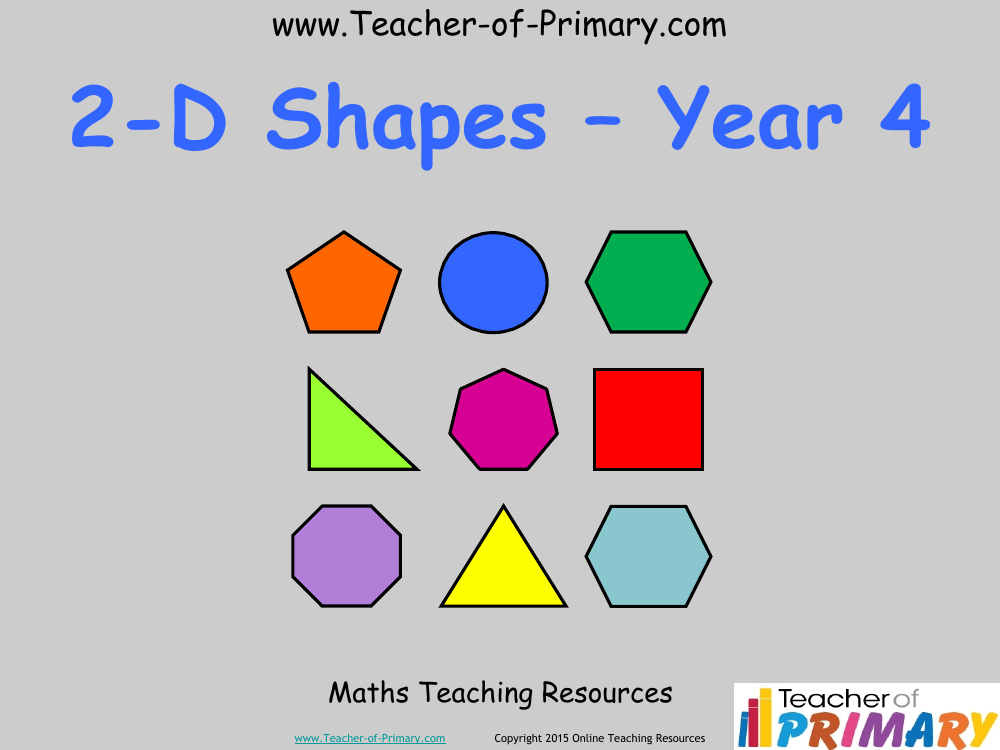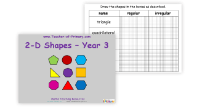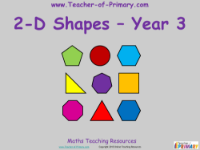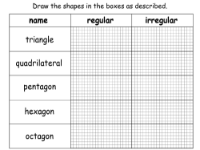2-D Shapes - PowerPoint

Maths Resource Description
In a comprehensive Year 4 mathematics resource, students are introduced to the intricacies of two-dimensional (2-D) shapes. The lesson aims to deepen their understanding of 2-D shapes by comparing and classifying them based on their properties and sizes. The term "2-D" refers to two-dimensional, meaning these shapes have length and width but no thickness, distinguishing them from three-dimensional (3-D) shapes. The lesson further explores polygons, which are 2-D shapes with straight sides. Students learn to differentiate between regular polygons, where sides and angles are equal, and irregular polygons, where at least one side or angle differs.
Delving into triangles, the resource explains that these three-sided polygons can vary in name depending on their sides and angles. A right-angled triangle, for instance, is an irregular polygon with one right angle. Equilateral triangles, with all sides and angles equal, are regular polygons. Isosceles triangles, with two equal sides and angles, and scalene triangles, with no equal sides or angles, are both irregular polygons. The lesson then moves on to quadrilaterals, which are four-sided polygons. Various types are discussed, including squares (regular polygons with equal sides and angles), rectangles (irregular with equal opposite sides and angles), rhombuses (irregular with equal sides but only equal opposite angles), parallelograms (irregular with equal opposite sides and angles), and trapeziums (irregular with one pair of parallel sides). Interactive elements invite students to identify the type of triangle or quadrilateral from given clues, reinforcing their learning through engagement.



